The Watertown Train Stations 1851 – 1963.
The first train to pull up to a station in Watertown occurred on the evening of September 5, 1851, at a small, temporary terminal located at the foot of Stone Street known as the Junction. The train would be greeted by a large, enthusiastic crowd in the neighborhood with applause and the waving of a thousand torches, or so it was written in The Story of the Rome, Watertown, and Ogdensburg Railroad.

In those early years, the “new” train station behind the Woodruff House wasn’t opened until 1857. At the time, as hard as it may be to believe, Factory Street was considered one of the wealthiest and prettiest streets full of aristocrats. Industrialization, along with the railroad, would soon change the landscape. A second depot for the Carthage, Watertown & Sackets Harbor Rail Road was constructed in 1871 across Mill Street at the corner of Factory.
By the turn of the century, the city of Watertown had become a prosperous city because of its industrialization. Its wealth was noticeable in the many elaborate mansions around town, not to mention the continuous construction happening everywhere. However, one thing it lacked was a new passenger terminal, one that would be a reflection of its growth and prosperity.
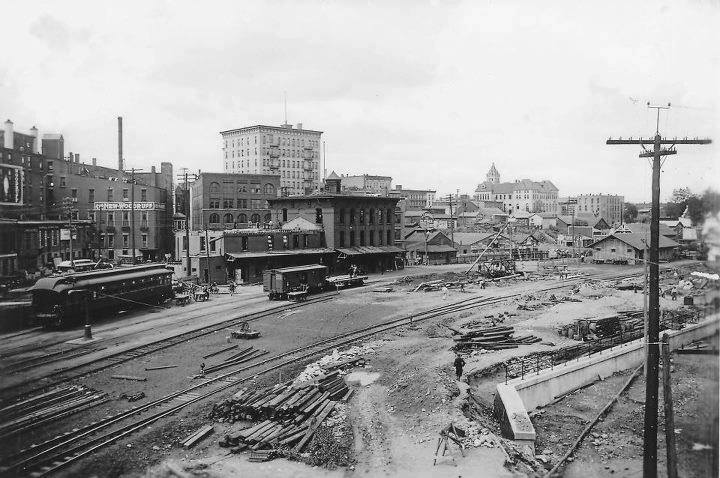
In 1906, the New York Central Railroad looked to build a new freight house in the city. After much discussion due to certain ramifications and additional planning needed, the location was decided upon: off West Main Street on what is now Edmund Street. However, placing the new freight house on the North Side of town led to the question of bridges.
For twenty or so years, an idea was proposed of building a bridge from Jackson Street to the north side. While the common council tried to initially include it as a leveraging point for the new freight house deal, they would soon drop it – but the issue of bridges was not over.
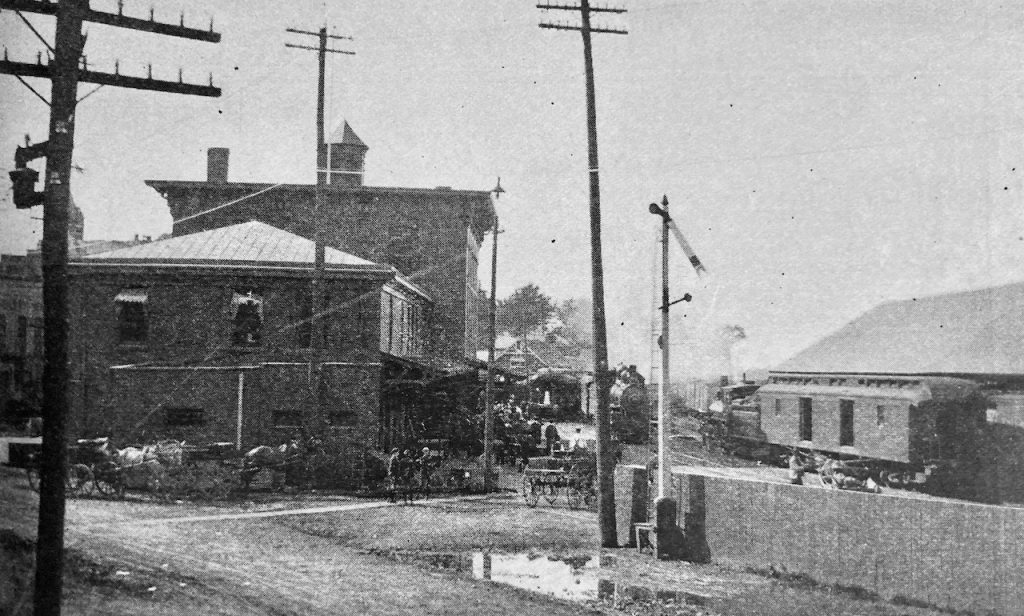
A new train depot was needed shortly to accommodate the growth and freight. The freight was then being handled near the old depot in what is now the J. B. Wise parking lot, and subsequently torn down after the new freight house was completed. During one of the many common council meetings discussing the New York Central plans, R. J. Buck, the city’s postmaster, wanted to go on record as being in favor of a new passenger station, saying the council should keep in mind the “crying need” of the city for a new passenger terminal.
In perhaps one of the council’s finest hours, the idea was approved by New York Central Railroad. The railroad had already agreed to the 12 clauses the city laid forth for the terms of acceptance for the new freight house being constructed off of West Main Street. This included paying 50% of a future Court Street Bridge that would help eliminate the grade-crossing issues both sides wished to address.

To summarize, in agreeing to allow the new freight house to be built on the north side, the city only had to pay 25% for the new Court Street Bridge and had one of the nicest passenger terminals built at the expense of NYCRR.
On March 26, 1907, the Watertown Daily Times would break the news–
A New Station – Central May Spend Quarter Of A Million. Fine Building Is Assured.
Plans have been tentatively decided upon, and it is understood they have been approved generally, though not in detail, for a new passenger station for the New York Central Rail Road in this city, a station of a type and capacity to equal those of many far larger cities and to anticipate the needs of Watertown for many years to come.
Incidentally the city will have practically three new thoroughfares, one of them a fine, paved plaza almost half as large as Public Square. Though one of the most beautiful cities in the State, Watertown long has given the stranger a most unattractive first impression. The station is old and inadequate, the approaches narrow, mud-defiled and most of them unattractive, and the adjacent buildings, as they appear from the station, give the impression of having slept in their soot.
Soon all this is to be changed, and Watertown is to have not only a model passenger station, one to compare favorably with those of such cities as Rochester or Buffalo, but also practically three new thoroughfares, and will probably present a fair appearance to the stranger on his first visit.

Of course, there would be delays, partially due to a depression in 1907, but by April 1909, the project was back on track. The New York Central Railroad and Hudson River Railroad agreed to spend over $300,000 to build one of the finest stations in the New York Central Lines.
Yet, again, delays would ensue, this time due to the property owners being “obstinate and extortionate” concerning rights, forcing the possibility of condemnation. The Watertown Daily Times even wrote an article discussing the talk of having the new station north of the river and how it “would throw the whole plan of the entire city out of joint.” Even speculation of placing it where the old Rome, Watertown, and Oswego Rail Road Depot was 40 years earlier at Watertown Junction had people believing that would be better than north of the river.

The idea of the new Watertown train station being anywhere else than where the current one became so contentious, a special committee was appointed to draft a letter in early September asking the Utilities Commission to order a new station to be built. By the end of October, the New York Central Rail Road would present the plans for the new Watertown train station, with construction beginning in the spring of 1910.
The Watertown Daily Times reported–
The main floor plans and the exterior drawings have been passed upon favorably by the railroad and transportation committee of the chamber of commerce, though whose activities the promise to build and the execution of the drawings have been hastened.
The station proper is the three-story building, while the two-story building at the right is the baggage department. The entrance to the ground floor of the main building will occupy about the same position as the entrance to the present station, and will lead to a rotunda where the ticket, Pullman, telephone, telegraph and baggage-counter offices will be located.
An opening from the rotunda to the left leads to the main waiting room, which will have seating capacity greater than that of either Syracuse or Albany Rooms. At the extreme left or west end of the waiting room is the entrance to the tracks, by means of stairs to a subway, similar to the arrangement in Syracuse.


The new Watertown train station formally opened on June 15, 1911. It was considered one of the region’s finest constructed and beautiful buildings, making a grand impression upon travelers as their first destination upon entering the city. The Woodruff Hotel, often the second and referred to as the North Country’s Waldorf Astoria, would make for a dynamic one-two punch for a visitor’s first arrival.

Alas, the dynamic synergy between the Woodruff and the Watertown train station was interdependent on one another. Both would take a backseat to America’s love of freedom as expressed by the automobile. With automobiles, Americans could drive where they wanted, when they wanted. The more popular they became, the less reliant people were on passenger trains. When the people stopped coming by train, it was the beginning of the end for the Woodruff.
By the early 1960s, passenger trains stopped their service to Watertown altogether. Without the daily trains scheduled coming and going and the rise in the demand for parking, the Watertown Train Station’s days were numbered.
The city took over the terminal after it was vacated by the New York Central Railroad. It was initially used as a bus terminal for Greyhound, until their new location opened on Factory Street. This, in turn, necessitated the razing of the old, and formerly 2nd, S & B Diner, which had become the North Star, then Red Star, Diner over the years.
An effort was then made to repurpose the terminal for an indoor market. However, the city council voted against, 11-0, in favor of watching another landmark fall instead. Rising maintenance costs and the loss of the steady flow of traffic would eventually lead to Woodruff’s demise a little over a decade later.












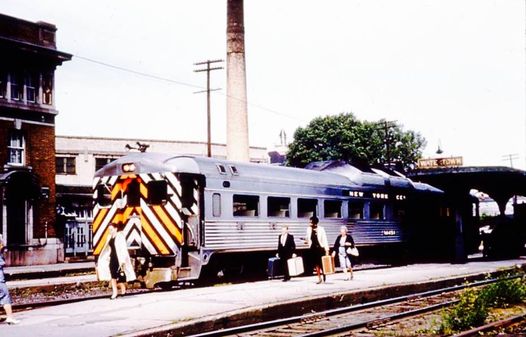



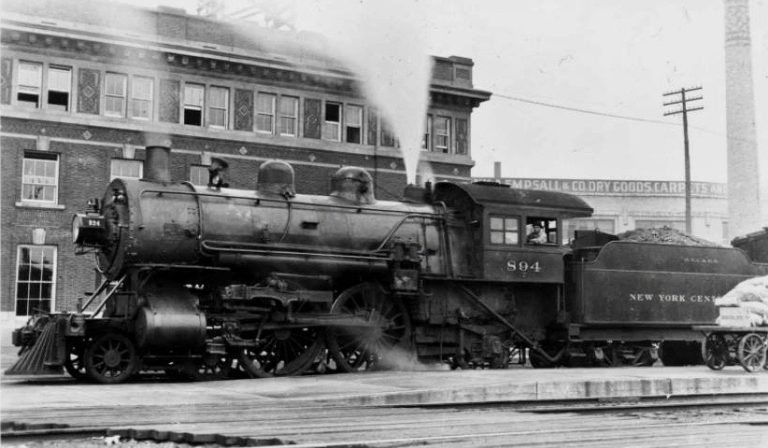


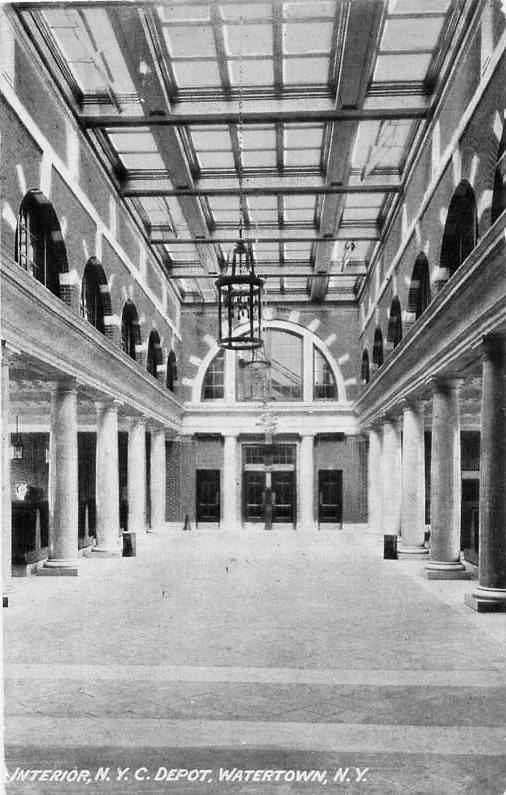













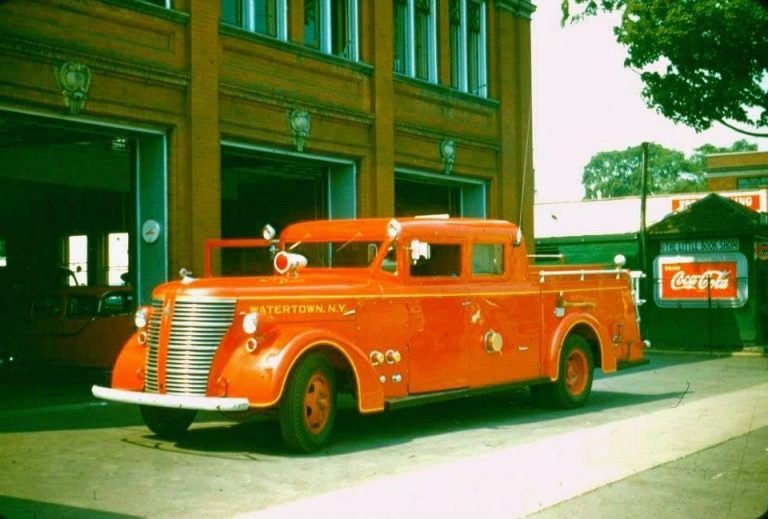


1 Reviews on “Watertown Train Stations (1851 – 1963)”
Adding photo of interior. Is that a… ghost?